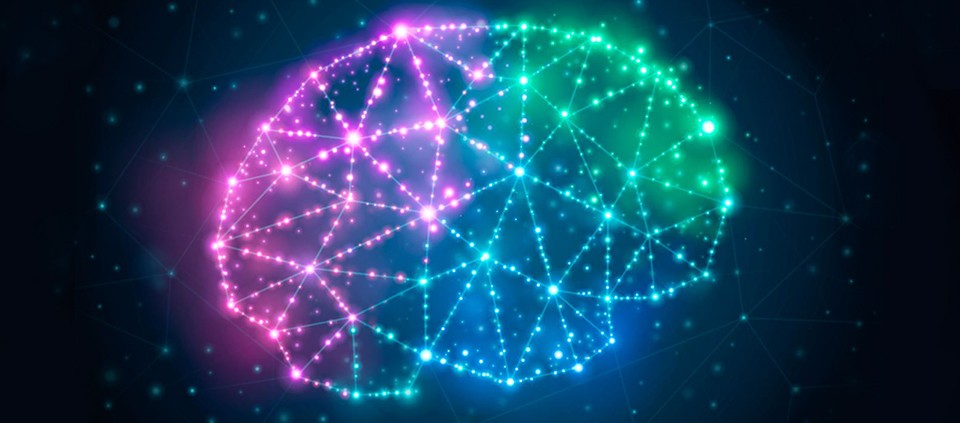The Evolution of the Brain and the Mind

An excerpt from Power Up Your Brain: The Neuroscience of Enlightenment, by David Perlmutter and Alberto Villoldo.
Thousands of years ago, our ancestors faced a neurological opportunity similar to the one we face today, an opportunity that facilitated an evolutionary leap forward. With the awakening of the neocortex, our forebears acquired a new brain structure that nature had wired for joy, creativity, and innovation.
To access that potential, our ancestors required specific nutrients to provide fuel to run their neurocomputer. Once they added brain-enriching foods to their diet, the faculties of certain individuals, the visionaries of their day, came online and began to create great works of art, devise written language, establish civilizations, and lay the foundations for our modern human experience.
During this time, ancestral shamans described Creation as a web of life in which we are all inter connected. This was a kind of Indra’s Net, which the mythology of ancient India describes as a web with an infinite number of intersecting strands and a precious jewel at the intersection of every strand. Each of the infinite number of jewels reflects every other jewel perfectly. Within this mythical net, all beings are interrelated, and all of our actions, no matter how slight, affect everyone else. Within this net, prophets converse with God and interpret His will, while mystics search for the elixir of immortality and alchemists attempt to transform lead into gold. These sages, mystics, and alchemists shared the same preoccupations as seers of today. They asked, as we do now: How can we live long and healthy lives, unaffected by debilitating illness and degenerative brain disease? How can we turn the dense lead of human suffering into the gold of enlightened consciouness?
In the scheme of history, the quest for metaphysical answers about the origin of life died when Charles Darwin published The Origin of Species. The popular understanding of the time was that life is a perennial struggle for survival, that humankind is governed by harsh Law of the Jungle where only the fittest win.
But, fortunately, after centuries of scientists’ dismissal and ignoring of the ancient teachings, people in all walks of life are once again asking the mystic’s questions about the significance and potential of human consciousness. Could evolution have also been favoring the survival of the wisest?
Ways of Fear, Ways of Wisdom
The history of human consciousness is marked by the battle between the older awareness, the ways of fear, and the newer awareness, the ways of love. When the newer awareness prevails, we discover a God of love and compassion, express religious freedom, and practice generosity. When the older awareness dominates, we tend to worship an angry god who scourges his enemies with plagues and who sends his chosen people on so-called holy wars to ensure his dominance. With the older brain, greed and intolerance prevail.
Lower awareness views everything, even nature’s beauty and bounty, as a commodity, valued only as a means to generate profit. Water, one of the essential elements of life, is seen not as a home of aquatic organisms and a natural means of transportation, but as a liquid to be bottled and sold. Air, another essential element, is seen not as a vital substance indispensable for breath but as vacant space in which to emit industrial waste products. Soil is seen not as a necessity for growing food but as property to be owned, fenced, and contaminated with agricultural chemicals and industrial and domestic waste. Mountains are seen not for the majesty but as places to be stripped of minerals and ores. Forests are seen not as animal habitats and places for spiritual retreat but as potential planks and boards. Even space beyond the sky above is seen not just as an opportunity for galactic exploration but as a place to dump planetary trash and spy on our global neighbors.
Even humans are being viewed as a commodity when our thinking is fettered to the ways of fear. Children in developing nations, for example, are seen as labor pawns in sweatshops or, in developed countries, as future rank-and-file employees. Senior citizens, at least in Western societies, are not revered for their wisdom but warehoused in “old people’s homes” until death finally gets them out of the way. People of ages in between, according to Darwinian protocol, are often trained in warfare or programmed to “get even,” if not “get ahead,” even at the expense of other fellow humans. But perhaps the worse dismissal of human value occurs in the spinmeister term “collateral damage,” which would have us heartlessly gloss over the killing of innocent civilians who happen to be caught in a war zone.
And while the new, higher awareness offers us the ability to think on a sophisticated and grand scale—to see Earth from space and to comprehend that, as the health of the planet goes, so goes our own health and well-being—we find societies, whether developed or emerging, returning again and again to seemingly inevitable violence in order to resolve conflicts and impose values on others.
While arguments wage over global warming—whether it exists or not and, if so, who is to blame, and what is the cause and the cure—and whether or not the world is perched on the edge of ecological disaster, many individuals are beginning to realize that human society is also standing on the brink of an extraordinary leap in consciousness.